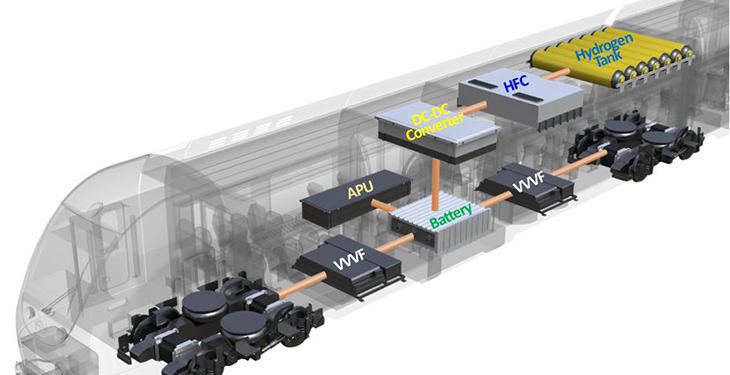The Ministry of Transport and Infrastructure has proposed the allocation of one billion euro from the National Recovery and Resilience Plan for new works on the railway network, an area that has been underfunded, and the ministry also has hydrogen trains planned, said the relevant minister, Cătălin Drulă.
“We have a strategy for developing the railway infrastructure for the next four years. I found it done when I came to the ministry, I only had the task of submitting it to the European Commission in January and this strategy speaks of modernization….We want to allocate one billion euros from PNRR because, if we look, this part of the modernizing has been underfunded… If we managed to have a billion euros, let’s say as an impact in the years 2022, 3, 4, 5, 6, that would mean a small revolution in itself and it would mean that this railway network of ours will go an area of decency. Unfortunately, in Romania, at the stage of the railway at the moment, decency has become a revolution. That was a priority for us and we want to somehow get out of this hypocrisy of bringing forward some major projects while the rest of the network is collapsed,” Drulă said.
The Minister pointed out that Romania is not doing well even in terms of rolling stock, given that the Railway Reform Authority fails to purchase new trains.
“Things are not going well either on the rolling stock side. There is a plan of Romania, which is 6-7 years old, through which new modern passenger trains were to be purchased with non-reimbursable financing from European funds and then used within the public service and somehow made available to operators, with contractual and commercial conditions to be fulfilled on their part. Unfortunately, these acquisitions are not completed, not even today and here is another big problem that needs to be solved. We simply finance more the running of empty trains, without conditions and quality indicators, which does not really help anyone “, the head of Transports claimed.
According to him, PNRR provides 5 billion euros for investments in the railway area, but the proposal will be negotiated with the European Commission.
“We were also concerned with the elaboration of proposals for the National Recovery and Resilience Plan. And, here, the proposal is to have 5 billion euros for investments in the railway area. Of course, this is part of a negotiation, it is in discussions with the European Commission. Let me tell you the news that I thought together with my team and discussed it with those in the ministry and with the infrastructure managers: allocating a financial axis to renew the infrastructure. From what I have been looking for in the past years, since joining the EU, we have focused a lot on investment policy on very large projects with an impact on small areas of the railway network. If we analyze the money spent on the euro/project/km of infrastructure we will see that this money is concentrated on small areas, mainly on a single corridor, on the former corridor 4 Curtici-Constanţa, and the rest of the railway network – those up to 10,000 km of track was somehow permanently underfunded and in poor condition. As you know, it is full of restrictions and speed limitations in our railway network, which also drives away passengers from this mode of transport and makes freight traffic less competitive,” also said Cătălin Drulă.
He said the ministry intends to develop a project involving the purchase of hydrogen trains.
“Returning to PNRR, we also have a financing axis for rolling stock. This is about either electric trains or – and here we would like to develop a project – hydrogen trains. We also talked to the industry, because here is a whole horizontal issue, from production to distribution, at lifetime costs for this mode of transport, but I would be happy to to take a technology in its infancy, when it is not yet widespread, because that would allow us to use some European money to achieve global European carbon targets, but also to develop an industry. And I think the best thing, beyond strategies, words and paper, is when you do it for example,” the Minister of Transport explained.
